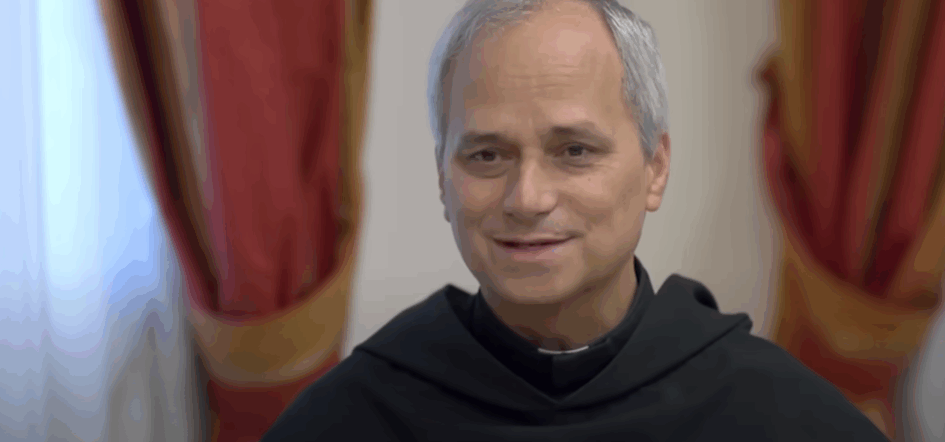In 2012, Pope Leo XIV, then Bishop Robert Prevost, gave a speech at the Synod of Evangelization that provided a strong warning against the modern popular culture as well as an insightful proposed solution founded in an expanded scope of evangelization. The transcript of that speech is included here.
“The Counterculture of the New Evangelization”
BISHOP PREVOST: Western mass media is extraordinarily effective in fostering within the general public enormous sympathy for beliefs and practices that are at odds with the Gospel — for example, abortion, homosexual lifestyle, euthanasia. Religion is at best tolerated by mass media as tame and quaint when it does not actively oppose positions on ethical issues that the media have embraced as their own. However, when religious voices are raised in opposition to these positions, mass media can target religion, labeling it as ideological and insensitive in regard to the so-called vital needs of people in the contemporary world.
The sympathy for anti-Christian lifestyle choices that mass media fosters is so brilliantly and artfully ingrained in the viewing public that when people hear the Christian message, it often inevitably seems ideological and emotionally cruel by contrast to the ostensible humaneness of the anti-Christian perspective. Catholic pastors who preach against the legalization of abortion or the redefinition of marriage are portrayed as being ideologically driven, severe, and uncaring — not because of anything they say or do, but because their audiences contrast their message with the sympathetic, caring tones of media-produced images of human beings who, because they are caught in morally complex life situations, opt for choices that are made to appear as healthful and good.
Note, for example, how alternative families comprised of same-sex partners and their adopted children are so benignly and sympathetically portrayed in television programs and cinema today. If the new evangelization is going to counter these mass media-produced distortions of religious and ethical reality successfully, pastors, preachers, teachers and catechists are going to have to become far more informed about the context of evangelizing in a world dominated by mass media.
The church fathers offered a formidable response to those non-Christian and anti-Christian literary and rhetorical forces at work throughout the Roman Empire in shaping the religious and ethical imaginations of the day. The Confessions of St. Augustine, with its central image of the cor inquietam, has shaped the way that Western Christians and non-Christians reimagine the adventure of religious conversion. In his City of God, Augustine used the tale of Alexander the Great’s encounter with a captured pirate to ironize the supposed moral legitimacy of the Roman Empire.
Church fathers, among them John Chrysostom, Ambrose, Leo the Great, Gregory of Nyssa, were not great rhetoricians insofar as they were great preachers. They were great preachers because they were first great rhetoricians. In other words, their evangelizing was successful in great part because they understood the foundations of social communication appropriate to the world in which they lived. Consequently, they understood with enormous precision the techniques through which popular religious and ethical imaginations of their day were manipulated by the centers of secular power in that world.
Moreover, the Church should resist the temptation to believe that it can compete with modern mass media by turning the sacred liturgy into spectacle. Here again, church fathers such as Tertullian remind us today that visual spectacle is the domain of the saeculum, and that our proper mission is to introduce people to the nature of mystery as an antidote to spectacle. As a consequence, evangelization in the modern world must find the appropriate means for redirecting public attention away from spectacle and into mystery.
At least in the contemporary western world, if not throughout the entire world, the human imagination concerning both religious faith and ethics is largely shaped by mass media, especially by television and cinema. Western mass media is extraordinarily effective in fostering within the general public enormous sympathy for beliefs and practices that are at odds with the Gospel.
However, overt opposition to Christianity by mass media is only part of the problem. The sympathy for anti-Christian lifestyle choices that mass media fosters is so brilliantly and artfully engrained in the viewing public, that when people hear the Christian message it often inevitably seems ideological and emotionally cruel by contrast to the ostensible humaneness of the anti-Christian perspective.
If the “New Evangelization” is going to counter these mass media-produced distortions of religious and ethical reality successfully, pastors, preachers, teachers and catechists are going to have to become far more informed about the challenge of evangelizing in a world dominated by mass media.
The Fathers of the Church, including Saint Augustine, can provide eminent guidance for the Church in this aspect of the New Evangelization, precisely because they were masters of the art of rhetoric. Their evangelizing was successful in great part because they understood the foundations of social communication appropriate to the world in which they lived.
In order to combat successfully the dominance of the mass media over popular religious and moral imaginations, it is not sufficient for the Church to own its own television media or to sponsor religious films. The proper mission of the Church is to introduce people to the nature of mystery as an antidote to spectacle. Religious life also plays an important role in evangelization, pointing others to this mystery, through living faithfully the evangelical counsels.
 The Libertarian Catholic
The Libertarian Catholic
















